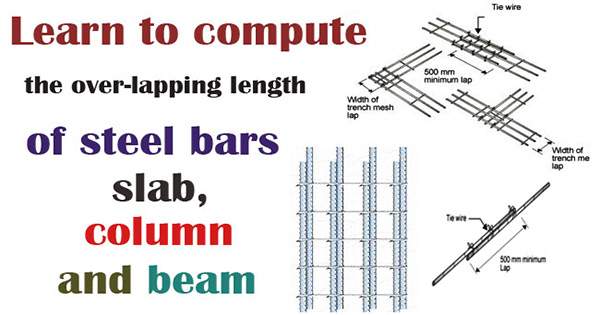Learn to compute the over-lapping length of steel bars in slab, column and beam

In this article briefly explains the process for working out the length of over lapping of steel bars which are placed in slab, beam, column etc. with the use of different types of formula.
Overlap length in columns, beams and slabs stands for the distance intersection among two connecting reinforcement bars. If it is required to reinforce a large member that ranges from a slab, column or beam, reinforcement steel should have been joined with the purpose of maintaining incessant effect.
In beam there are two zones like compression zone and tensile zone. The formula is different for both the zones.
Zones are based on the direction of loading. When a beam loads in gravitational direction anywhere al-through the member, the beam is likely to bend with the loading. Under this situation, the portion remains over the neutral axis is known as the compression zone and the portion remains in bottom is known as the tension zone. These names are provided on the basis of the behaviour of concrete fibers in the corresponding face i.e. in tension face, the fibers is likely to fail by parting. In the compression side, they are likely to get broken.
But, if there is a seismic pressure e.g. in raft foundation, when the force originates from the bottom, then the beam is likely to bend up, so the upper portion over the neutral axis develops into the tensile zone and the bottom portion develops into the compression zone. The overlapping is different for both compression & tension zone.
The formula for overlapping in slab is given as 50d. Here, d denotes the diameter of bar. So, if the diameter of the slab is 8mm then total distance = 50 x 8 = 400 mm.
The overlapping in tensile zone in column & beam = 40d (d = diameter of bar). We know the diameter is 8 mm; so total distance = 40 x 8 = 320 mm.
The overlapping in compression zone in beam = 24d. The diameter is given as 8 mm; so total distance = 24 x 8 = 192 mm
The minimum lapping should be 175 mm.

